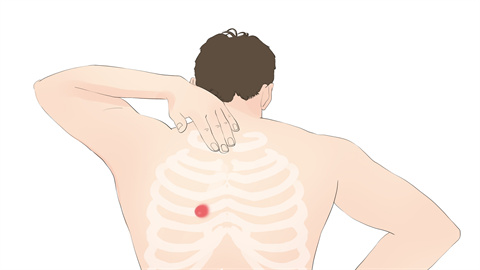What causes a hard lump under the skin, and what should I do?
Generally, a hard lump under the skin may be caused by muscle tension or spasm, fat accumulation, sebaceous cyst, ganglion cyst, rheumatoid arthritis, or other reasons. It is recommended to seek timely medical consultation at a hospital and receive general treatments, medications, or other therapies under a doctor's guidance. A detailed explanation is as follows:

1. Muscle Tension or Spasm
Prolonged poor posture, excessive exercise, or sudden muscle strain can cause muscles to remain in a tense state, leading to the accumulation of metabolic waste and localized muscle fiber contraction, forming a palpable hard lump. It is important to maintain correct posture, warm up adequately before exercise, stretch properly afterward, and avoid excessive fatigue to reduce the occurrence of muscle tension or spasms.
2. Fat Accumulation
Long-term high-calorie diet combined with insufficient physical activity can result in energy intake far exceeding expenditure, causing excess fat to accumulate in subcutaneous tissues and form fatty lumps, manifesting as hard masses under the skin. A balanced diet, reduced intake of high-calorie and high-fat foods, and increased physical activity are necessary to promote fat burning and maintain a healthy weight.
3. Sebaceous Cyst
Sebaceous cysts primarily develop due to blockage of the sebaceous gland ducts, causing the cystic epithelium of the sebaceous gland to gradually expand with increasing contents, forming a retention cyst. The cyst contains white, curd-like sebaceous material and feels firm upon touch. Symptoms such as redness and pain may be present. Treatment may include medications like Amoxicillin Capsules, Cefuroxime Axetil Tablets, and Mupirocin Ointment, as directed by a physician.
4. Ganglion Cyst
Ganglion cysts are often associated with chronic joint or tendon sheath strain, or trauma. These factors can cause malnutrition in connective tissues around joints, ligaments, or tendon sheaths, leading to degenerative mucoid change and the formation of a cyst with a firm texture. Symptoms such as localized soreness and restricted joint movement may also occur. Treatment may involve medications such as Ceftriaxone Sodium Injection, Penicillin Sodium Injection, and Ichthammol Ointment, as recommended by a doctor.
5. Rheumatoid Arthritis
Rheumatoid arthritis may be related to genetic, infectious, and environmental factors. The immune system attacks the synovial membrane of joints, causing inflammation that stimulates surrounding tissue proliferation and the formation of firm subcutaneous nodules. Symptoms such as joint pain, swelling, and deformity may also accompany this condition. Treatment may include medications such as Methotrexate Tablets, Leflunomide Tablets, and Hydroxychloroquine Sulfate Tablets, as advised by a physician.
It is important to avoid skin injuries, maintain personal hygiene, bathe regularly, and change clothes frequently. Additionally, regular medical checkups are recommended for early detection of potential issues.







